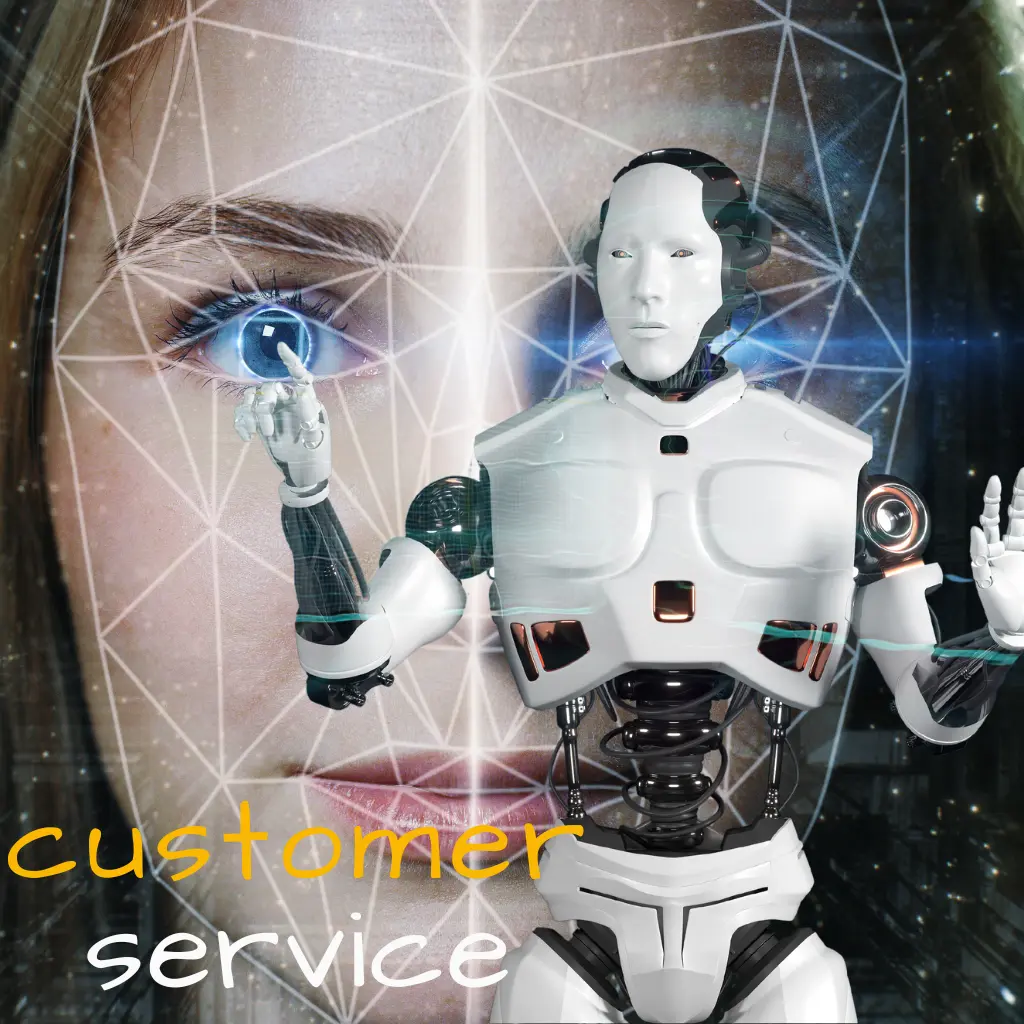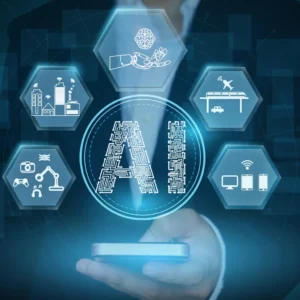
Revolutionizing Customer Engagement
Unveiling the Power of Facial Recognition and Emotion Analysis Tools!
Integrating cutting-edge technologies is paramount for staying ahead in the ever-evolving customer service landscape. The emergence of Customer Service Tools for Facial Recognition and Emotion Analysis marks a significant stride towards automating processes and enhancing the customer experience.
With a 15-year legacy in customer service, our company is poised to lead by harnessing the power of facial recognition and emotion analysis technologies. This transformative initiative aims to streamline identity verification, analyze customer sentiments in real-time, and bolster security protocols.
In this discussion, we delve into the requisite business knowledge, software expertise, hardware requirements, training necessities, and integrations vital for successfully implementing these innovative tools. Together, they promise to redefine customer service paradigms, fostering a more personalized and secure interaction environment.
Table of Contents

Arindam Roy
An Automation Consultant with 25+ years of IT Experience
5 Facial Recognition and Emotion Analysis Tool ideas for the Customer Service
Customer Service Tools for Facial Recognition and Emotion Analysis:
1. Facial Recognition for Identity Verification:
This tool employs advanced facial recognition technology to enhance the security of customer identity verification processes. By analyzing unique facial features, the system verifies customers’ authenticity, providing a secure and efficient means of ensuring the identity of individuals accessing your services. This technology provides additional security to safeguard sensitive customer information and transactions.
2. Emotion Analysis in Video Customer Interactions:
Utilizing facial expression analysis, this tool enables businesses to gauge customer emotions during video interactions. By interpreting facial cues and expressions, customer service agents can better understand and respond to customers’ emotional states in real time. This enhances the customer experience by allowing for more personalized and empathetic interactions, improving satisfaction and loyalty.
3. Biometric Authentication for Support Access:
This tool combines facial recognition and other biometric data to provide secure access to customer support services. The system ensures only authorized individuals can access sensitive support information by utilizing unique biometric markers, such as facial features, fingerprints, or voice recognition. This enhances security and streamlines the authentication process for a smoother customer service experience.
4. Visual Sentiment Analysis in Customer Interactions:
This tool analyzes images or videos using computer vision to understand customer sentiment and context during interactions. By understanding the visual cues in multimedia content, businesses can gain insights into customer satisfaction, preferences, and concerns. This valuable information can be used to tailor services, identify trends, and proactively address issues, ultimately improving overall customer satisfaction.
5. Security Measures Using Facial Recognition:
This tool enhances security protocols by implementing facial recognition as an authentication measure. Businesses can strengthen their security posture by integrating facial recognition into access control systems. This measure can be applied to secure physical premises, digital platforms, or sensitive information, providing a robust and reliable means of safeguarding customer data and ensuring the integrity of customer interactions.
In summary, these Customer Service Tools for Facial Recognition and Emotion Analysis leverage cutting-edge AI technologies to bolster security, personalize interactions, and gain valuable insights into customer sentiments. As a market leader in the Customer Service domain for 15 years, embracing these tools reflects a commitment to innovation and providing a secure, efficient, and customer-centric service experience.
Facial recognition for identity verification
Business Knowledge Required to Build These Tools:
- Customer Service Domain Expertise: A deep understanding of customer service processes, industry regulations, and security standards is essential to align facial recognition for identity verification with business requirements.
- User Privacy and Compliance Knowledge: Awareness of data privacy regulations and compliance standards is crucial to ensuring the responsible and legal implementation of facial recognition technology for identity verification.
Software Knowledge Needed to Build the Tools:
- Facial Recognition Algorithms: Expertise in developing or utilizing facial recognition algorithms that accurately and securely verify customer identities.
- Biometric Data Processing: Knowledge of processing and safeguarding biometric data, including facial features, ensuring the highest levels of security and privacy.
- Security Protocols: Understanding security protocols to integrate facial recognition securely into customer service processes, protecting against unauthorized access and potential breaches.
Hardware Needed to Run the Tools:
- High-Performance Computing Resources: Adequate computing power to handle the processing requirements of facial recognition algorithms, whether on-premises or through cloud services.
- Secure Storage Infrastructure: Robust storage infrastructure to securely store biometric data and related information, focusing on data integrity and protection.
Training Required to Run These Tools Once Created:
- User Training for Customer Service Representatives: This training will help customer service representatives understand and use the facial recognition system effectively, ensuring a seamless integration into their workflow.
- System Maintenance Training: This training is for IT staff and system administrators to maintain and troubleshoot the facial recognition system and address technical issues promptly.
Integrations Necessary for Execution:
- Customer Service Platforms: Integration with existing customer service platforms to seamlessly incorporate facial recognition into identity verification processes.
- Security Systems: Integration with broader security systems to enhance overall security measures, ensuring a comprehensive approach to customer identity verification.
Comparative Tools Already Available in the Market:
- FaceID by Apple: Widely used for secure authentication on mobile devices but may require adaptation for specific customer service needs.
- Amazon Rekognition: Offers facial analysis and recognition capabilities, but customization may be necessary for precise identity verification within a customer service context.
Recommendation:
Given the specialized nature of facial recognition for identity verification, a combination of building from scratch and potentially leveraging existing solutions could be considered. Developing a custom solution ensures alignment with specific business requirements while incorporating existing technologies, which can expedite development.
Cost/Benefits Analysis on the Recommendation:
- Costs:
- Development Costs: Initial expenses for building the facial recognition tool tailored to customer service needs.
- Integration Costs: Expenses related to integrating the tool with existing customer service platforms and security systems.
- Benefits:
- Customization: Tailoring the solution to specific business requirements ensures a precise fit for customer service processes.
- Control: Building from scratch controls the development process and allows in-house modifications.
In conclusion, a hybrid approach balances customization and leveraging existing technologies within Customer Service Tools for Facial Recognition and Emotion Analysis.
Emotion analysis in video customer interactions
Business Knowledge Required to Build These Tools:
- Customer Interaction Dynamics: A comprehensive understanding of customer interaction patterns, including verbal and non-verbal cues, to accurately interpret and analyze emotions during video interactions.
- Psychology of Facial Expressions: Knowledge of the psychology behind facial expressions and emotions to develop algorithms that accurately interpret a wide range of customer emotions.
- Industry-Specific Context: Familiarity with industry-specific terminology and nuances to ensure that the emotion analysis aligns with the context and expectations of the Customer Service domain.
Software Knowledge Needed to Build the Tools:
- Facial Expression Analysis Algorithms: Expertise in developing or utilizing advanced facial expression analysis algorithms capable of accurately identifying and categorizing a spectrum of emotions.
- Computer Vision Techniques: Proficiency in computer vision techniques to process and interpret facial features and expressions in video interactions.
- Machine Learning for Emotion Recognition: Skills in implementing machine learning models, particularly deep learning approaches, to continuously improve emotion recognition accuracy over time.
Hardware Needed to Run the Tools:
- High-Performance Computing Resources: Adequate computing power, potentially on the cloud, is needed to process and analyze video streams in real-time, ensuring timely and accurate emotion analysis during customer interactions.
- Storage Infrastructure: Sufficient storage to archive historical data for training and refining the emotion analysis models and store real-time analysis results.
Training Required to Run These Tools Once Created:
- User Training for Customer Service Representatives: This training is for customer service representatives to understand the insights the emotion analysis tool provides and leverage them to enhance customer interactions.
- Data Annotation and Model Refinement: Training for data annotation teams to label emotions accurately for ongoing model refinement, ensuring the system adapts to diverse customer expressions.
Integrations Necessary for Execution:
- Video Communication Platforms: Integration with video communication platforms used in customer interactions to seamlessly incorporate the emotion analysis tool.
- Customer Relationship Management (CRM) Systems: Integration with CRM systems to link emotion analysis results with customer profiles, enabling personalized interactions based on emotional states.
Comparative Tools Already Available in the Market:
- Affectiva: A platform specializing in emotion recognition technology for video content, offering a range of emotion analysis features.
- IBM Watson Visual Recognition: Provides facial expression analysis capabilities for emotion recognition, which are customizable for various applications, including customer service.
Recommendation:
Considering the specialized nature of emotion analysis in video customer interactions, exploring and customizing existing tools may be more efficient than building from scratch. This allows for faster implementation while tailoring the tool to specific business needs.
Cost/Benefits Analysis on the Recommendation:
- Costs:
- Licensing Fees: Incurred costs for purchasing licenses or subscriptions for the chosen emotion analysis tool.
- Customization Costs: Potential expenses to seamlessly align the tool with Customer Service requirements.
- Benefits:
- Time-to-Implementation: Faster deployment compared to building from scratch, leading to quicker improvements in customer interactions based on emotion analysis.
- Specialized Features: Access to advanced features and continuous updates provided by specialized tools, enhancing the overall effectiveness of emotion analysis.
In conclusion, the recommendation to explore and customize existing emotion analysis tools offers a pragmatic approach, balancing efficiency, reliability, and customization within Customer Service Tools for Facial Recognition and Emotion Analysis.
Biometric authentication for support access
Business Knowledge Required to Build These Tools:
- Customer Support Processes: In-depth understanding of customer support workflows, user access requirements, and security protocols to seamlessly integrate biometric authentication.
- Biometric Data Privacy and Compliance: Knowledge of biometric data privacy regulations and compliance standards is essential to ensure the responsible and legal implementation of biometric authentication for support access.
- User Authentication Policies: To integrate facial recognition and biometric data seamlessly, one must be familiar with the company’s existing user authentication policies, including password management and access control.
Software Knowledge Needed to Build the Tools:
- Facial Recognition and Biometric Algorithms: Expertise in developing or implementing advanced facial recognition and biometric algorithms to ensure accurate and secure user authentication.
- Biometric Data Processing and Encryption: Knowledge of processing and encrypting biometric data, including facial features and other biometric markers, to protect sensitive user information.
- Access Control Systems: Proficiency in building or integrating with access control systems that utilize biometric authentication, ensuring a seamless connection with existing support services.
Hardware Needed to Run the Tools:
- High-Performance Computing Resources: Adequate computing power, potentially on the cloud, to process facial recognition and biometric data quickly and securely.
- Biometric Sensors and Cameras: Integration with high-quality biometric sensors and cameras capable of accurately capturing and processing facial and other biometric data.
Training Required to Run These Tools Once Created:
- User Training for Support Staff: Support staff will be trained to use biometric authentication tools properly and understand the new access control protocols.
- System Administrators: This training allows system administrators to manage and monitor the biometric authentication system, including addressing technical issues.
Integrations Necessary for Execution:
- Support Ticketing Systems: Integration with support ticketing systems to link biometric authentication data with customer support interactions, enhancing security and traceability.
- User Management Systems: Integration with user management systems to synchronize biometric authentication data with user profiles, streamlining access control and permissions.
Comparative Tools Already Available in the Market:
- Okta Verify: A multi-factor authentication tool that supports facial recognition and biometric authentication for secure access to various services.
- Microsoft Windows Hello: Offers facial recognition and biometric authentication for secure access to Windows devices and applications.
Recommendation:
Considering the specialized nature of biometric authentication, exploring and customizing existing tools is recommended. This approach ensures a faster implementation while tailoring the tool to specific business needs.
Cost/Benefits Analysis on the Recommendation:
- Costs:
- Licensing Fees: Incurred costs for purchasing licenses or subscriptions for the chosen biometric authentication tool.
- Customization Costs: Potential expenses to seamlessly align the tool with unique Customer Service requirements.
- Benefits:
- Time-to-Implementation: Faster deployment compared to building from scratch, leading to quicker improvements in support access based on biometric authentication.
- Specialized Features: Access to advanced features and continuous updates provided by specialized tools, enhancing the overall effectiveness of biometric authentication.
In conclusion, the recommendation to explore and customize existing biometric authentication tools offers a pragmatic approach, balancing efficiency, reliability, and customization within Customer Service Tools for Facial Recognition and Emotion Analysis.
Visual sentiment analysis in customer interactions
Business Knowledge Required to Build These Tools:
- Understanding of Customer Interaction Dynamics: A deep understanding of customer interaction patterns, including visual content, to accurately interpret sentiment and context in images or video during customer interactions.
- Domain-Specific Context: Familiarity with industry-specific terminology, products, and services to ensure that the visual sentiment analysis aligns with the specific context and needs of the Customer Service domain.
- Sentiment Analysis Criteria: Expertise in defining criteria for sentiment analysis, considering nuances and variations in customer emotions to provide accurate insights into visual content.
Software Knowledge Needed to Build the Tools:
- Computer Vision Techniques: Proficiency in computer vision techniques to process and analyze visual content, extracting relevant sentiment and context analysis features.
- Natural Language Processing (NLP): Integrating NLP techniques to comprehend textual content associated with images or videos provides a comprehensive sentiment analysis.
- Machine Learning for Sentiment Analysis: Skills in implementing machine learning algorithms, particularly those related to sentiment analysis, to continually improve the accuracy and effectiveness of the visual sentiment analysis tool.
Hardware Needed to Run the Tools:
- High-Performance Computing Resources: Adequate computing power, potentially on the cloud, to process and analyze visual content in real-time during customer interactions.
- GPU Acceleration: Utilization of GPU acceleration to enhance the speed and efficiency of complex visual sentiment analysis tasks.
Training Required to Run These Tools Once Created:
- User Training for Customer Service Representatives: This training will help customer service representatives understand and utilize insights derived from visual sentiment analysis in their interactions with customers.
- Data Annotation and Model Refinement: Training for data annotation teams to accurately label visual content for training and refining the sentiment analysis models.
Integrations Necessary for Execution:
- Customer Interaction Platforms: Integration with customer interaction platforms, including chat systems or social media channels, to seamlessly analyze visual content and provide sentiment insights.
- Content Management Systems (CMS): Integration with CMS to facilitate the dynamic updating of content based on sentiment analysis, ensuring timely responses to customer needs.
Comparative Tools Already Available in the Market:
- Clarifai: Offers a visual recognition platform that includes sentiment analysis capabilities for images and videos.
- Google Cloud Vision API: Provides powerful image analysis capabilities, including sentiment analysis, using pre-trained machine learning models.
Recommendation:
Given the complexity of visual sentiment analysis, exploring and customizing existing tools is recommended. This approach ensures a faster implementation while tailoring the tool to specific business needs.
Cost/Benefits Analysis on the Recommendation:
- Costs:
- Licensing Fees: Incurred costs for purchasing licenses or subscriptions for the chosen visual sentiment analysis tool.
- Customization Costs: Potential expenses for adapting the tool to align with the unique requirements of the Customer Service domain.
- Benefits:
- Time-to-Implementation: Faster deployment compared to building from scratch, leading to quicker improvements in customer interactions based on visual sentiment analysis.
- Specialized Features: Access to advanced features and continuous updates provided by specialized tools, enhancing the overall effectiveness of sentiment analysis.
In conclusion, the recommendation to explore and customize existing visual sentiment analysis tools offers a pragmatic approach, balancing efficiency, reliability, and customization within Customer Service Tools for Facial Recognition and Emotion Analysis.
Security measures using facial recognition
Business Knowledge Required to Build These Tools:
- Security Protocols and Standards: A deep understanding of security protocols and industry standards to ensure the facial recognition authentication measure aligns with best practices and compliance requirements.
- User Authentication Policies: Familiarity with existing user authentication policies within the company, including password management and access control, to seamlessly integrate facial recognition into security protocols.
- Risk Assessment: Knowledge of potential risks and vulnerabilities associated with facial recognition technology, allowing for the implementation of mitigation measures to enhance overall security.
Software Knowledge Needed to Build the Tools:
- Facial Recognition Algorithms: Expertise in developing or implementing robust facial recognition algorithms that provide accurate and secure authentication.
- Biometric Data Processing and Encryption: Knowledge of processing and encrypting biometric data, including facial features, to protect sensitive user information and maintain data integrity.
- Access Control Systems: Proficiency in building or integrating with access control systems to ensure that facial recognition seamlessly integrates into existing security frameworks.
Hardware Needed to Run the Tools:
- High-Performance Computing Resources: Adequate computing power, potentially on the cloud, to process facial recognition data quickly and securely.
- High-Quality Cameras and Sensors: Utilization of high-quality cameras and sensors capable of capturing detailed facial features for accurate authentication.
Training Required to Run These Tools Once Created:
- User Training for Security Personnel: This training will teach security personnel how to properly use and monitor the facial recognition authentication system, including understanding potential challenges and responses.
- System Administrators: This training allows system administrators to manage and monitor the facial recognition security system, address technical issues, and ensure seamless operation.
Integrations Necessary for Execution:
- Access Control Systems: Integration with ACL (access control systems) to enforce security measures based on facial recognition authentication.
- User Management Systems: Integration with user management systems to synchronize facial recognition data with user profiles, ensuring accurate and up-to-date authentication.
Comparative Tools Already Available in the Market:
- FaceFirst: Provides facial recognition solutions for access control and security applications, offering a range of features for identity verification.
- NEC NeoFace: Offers facial recognition technology designed for secure access control, with applications in various industries, including security.
Recommendation:
Given the critical nature of security measures, exploring and customizing existing facial recognition tools tailored to security applications is recommended. This approach ensures a faster implementation while addressing specific security needs.
Cost/Benefits Analysis on the Recommendation:
- Costs:
- Licensing Fees: Incurred costs for purchasing licenses or subscriptions for the chosen facial recognition security tool.
- Customization Costs: Potential expenses for adapting the tool to align seamlessly with the unique security requirements of the Customer Service domain.
- Benefits:
- Time-to-Implementation: Faster deployment compared to building from scratch, leading to quicker improvements in security protocols based on facial recognition.
- Specialized Features: Access to advanced features and continuous updates provided by specialized tools, enhancing the overall effectiveness of security measures.
In conclusion, the recommendation to explore and customize existing facial recognition security tools offers a pragmatic approach, balancing efficiency, reliability, and customization within Customer Service Tools for Facial Recognition and Emotion Analysis.
Conclusion
In conclusion, integrating Customer Service Tools for Facial Recognition and Emotion Analysis represents a pivotal step towards advancing automation and leveraging cutting-edge AI technologies in customer service. With a profound 15-year history in the customer service domain, the strategic decision to explore and potentially customize existing tools underscores a commitment to efficiency, reliability, and customization. These tools, ranging from facial recognition for identity verification to emotion analysis in video interactions, demonstrate a keen understanding of user behaviour, industry-specific nuances, and the critical need for security measures.
The business knowledge required encompasses a deep understanding of customer interactions, security protocols, and compliance standards. Meanwhile, the software expertise needed spans facial recognition algorithms, computer vision techniques, and machine learning for accurate sentiment analysis. Adequate high-performance computing resources and biometric sensors constitute the hardware prerequisites for seamless tool functionality.
To ensure the success of these tools, comprehensive training for customer service representatives, system administrators, and data annotation teams is imperative. Integrations with existing platforms, including customer support systems, access control systems, and content management systems, enhance the overall efficacy of the facial recognition and emotion analysis tools.
While comparative tools such as Clarifai and Microsoft Windows Hello exist in the market, a tailored recommendation emerges – explore and potentially customize existing solutions. This approach balances efficiency and customization, providing faster implementation, access to specialized features, and continuous updates. The cost/benefits analysis underscores the strategic value of this approach, heralding a new era where customer service is seamlessly intertwined with Facial Recognition and Emotion Analysis tools for enhanced security, personalized interactions, and unparalleled customer satisfaction.
Related Articles
- 50 AI Tools for the Customer Services Domain
- 5 Customer Service Speech Recognition and Processing Tools
- 5 Customer Service Predictive Analytics and Recommendation
- 5 Customer Service Tolls for Automation and RPA
- 5 Customer Service Natural Language Processing (NLP) Tools
- 5 Customer Service Tools for Knowledge Management
- 5 Customer Service Tools for Continuous Learning and Improvement
- 5 Customer Service Tools for Customer Survey Analysis
- 5 Customer Service Tools for Social Media Monitoring
- 5 Customer Service Tools for Data Security and Privacy



























